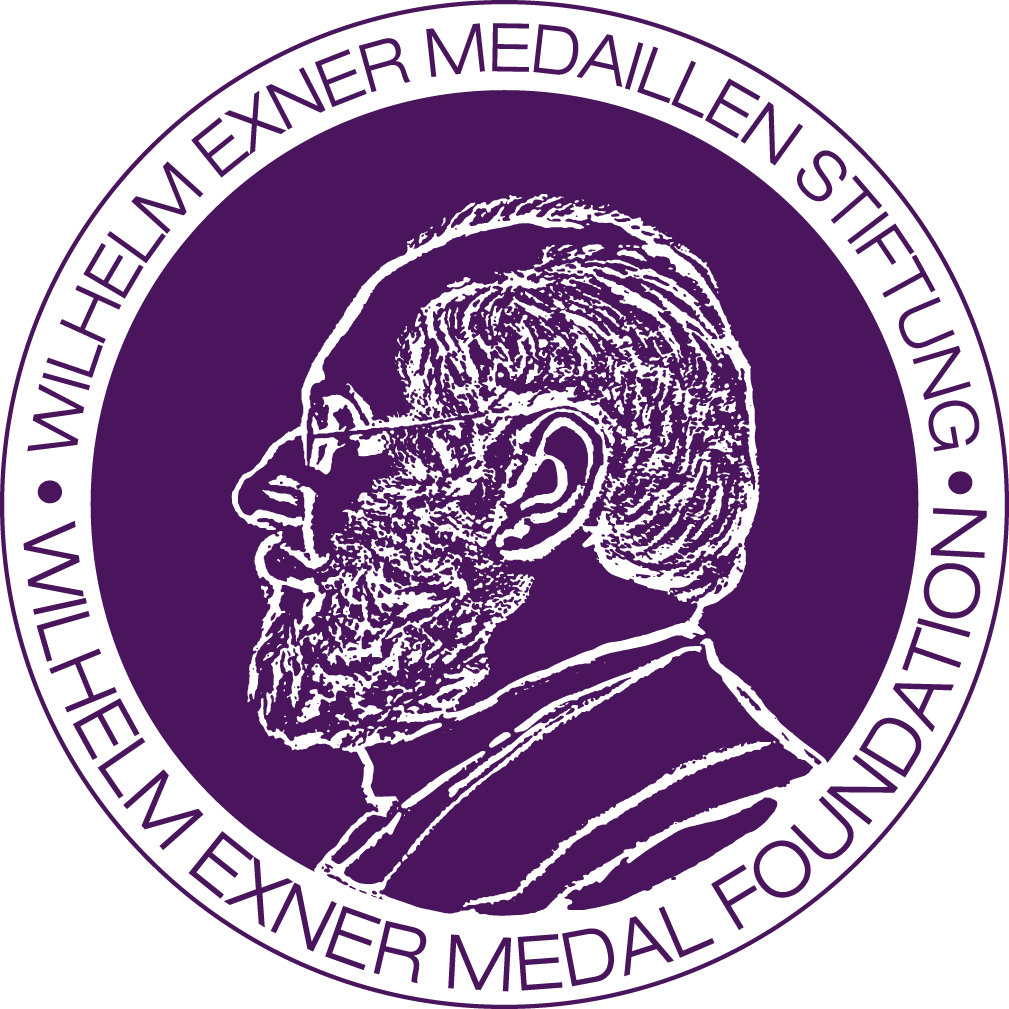When the Austrian Trade Association decided to create an annual award, those responsible felt it was important to be able to give the honourees something special physically as well as honourably. It was quickly agreed that a medal would be given to each new Wilhelm Exner award winner. Naturally, a master of the art of medal making had to be engaged to create this award.
The clients in the trade association were particularly proud to be able to win none other than Stefan Schwartz for the design and craftsmanship. In Wilhelm Exner’s time, he was, alongside Anton Scharff, the designer of the 1892 crown currency, and Josef Tautenhyn the Elder, the medallist in the Habsburg Empire. Today this skill is carried out by a few mainly for the “Austrian Mint”. But in the days of the Monarchy, when medals were gladly awarded by the imperial house as a token of gratitude and appreciation, there were a large number of artists who created coins, medals and planchets. It was considered particularly honourable to be commissioned to redesign the coins, and the artists were also publicly rewarded for this. Unlike today, where coins and medals are designed with the help of a computer and then cast, in the past a so-called graver was used to engrave in reverse into a round metal die in order to press it onto a blank piece of metal. Of course, there were differences in the fineness of execution here as well.
Stefan Schwartz was one of the most important medallists and sculptors around 1900 in Vienna.
He was born on 20 August 1851 in Nyitra, then Hungary, now Slovakia. He decided at a very early age not to become a carpenter like his father, but after dropping out of grammar school began an apprenticeship as a chaser in his cousin’s silverware factory in Pest. At the age of 16, in 1867, he moved to Vienna, where he completed his apprenticeship at the renowned bronzeware factory Dziedzinski-Hanusch with the master craftsman’s examination. During this apprenticeship he attended courses at the Realschule Wieden to study modelling and figural drawing. After completing his apprenticeship, he found a new employer at the Hofkammer Metallwarenfabrik Mayerhofer & Klinkosch, very soon transferring to the Vienna School of Applied Arts, now the University of Applied Arts. There he studied under Professor Otto König, mainly figurative sculpture. König was one of the designers of the figural motifs on the most important magnificent buildings on Vienna’s Ringstrasse, such as the Opera, the Burgtheater and the Kunsthistorisches Museum.
Under this excellent sculptor and teacher, Stefan Schwartz was able to develop wonderfully artistically and was soon a respected designer of small sculptures and medals. So it is not surprising that in 1876 Rudolf von Eitelberg himself, the founder of the Vienna School of Applied Arts, brought him to this institute as a teacher. In this position he established the new department of “Ciselieren und Gravieren” (engraving). In 1881 he was finally appointed “real teacher” and from 1884 professor. In this year he also made the enchanting bust “the artist’s bride”.
There, at today’s applied “Angewanten”, he taught the art genre “metal sculpture” as a professor for many years. In the course of his work as an artist, he created a large number of sculptures, such as “Adventus Augusti “in the passageway of the Michaelator in the Hofburg,
the bust of Friedrich Count Schönborn for the Parliament in the Hall of Columns, and the statue of Seneca in the Assembly Hall. He also sculpted the Schenkel monument in the arcaded courtyard of Vienna University.
He also modelled numerous medals, such as those for the silver wedding of the imperial couple, those for the death of Empress Elisabeth or for the 50th and 60th anniversaries of the reign of Emperor Franz Joseph, but also the state medal for fine arts and those for the jubilee trade exhibition in Vienna, organised by the Lower Austrian Trade Association, today’s ÖGV.
The esteem in which Stefan Schwartz was held by the imperial family and the great importance he enjoyed as an artist and medallist at the beginning of the 20th century is particularly evident from the fact that he was allowed to make the Austrian crown coin in silver and gold with the likeness of Emperor Franz Joseph.
Looking at his artistic oeuvre explains why Stefan Schwartz, at the age of 70, was commissioned by the Austrian Trade Association to design the Wilhelm Exner Medal 1921.
The diameter of this bronze medal is 7.5 cm and shows the portrait of Dr. Wilhelm Exner on one side, as well as the artist’s signature. The other side shows Wilhelm Exner and the year of the foundation 1921. In the old tradition, the medal is crowned with the inscription “Wilhelm Exner-Medaille des N.Ö.Gewerbevereins in Wien+”.
Stefan Schwartz died in 1924 in Raabs an der Thaya and was buried at the Vienna Central Cemetery.


